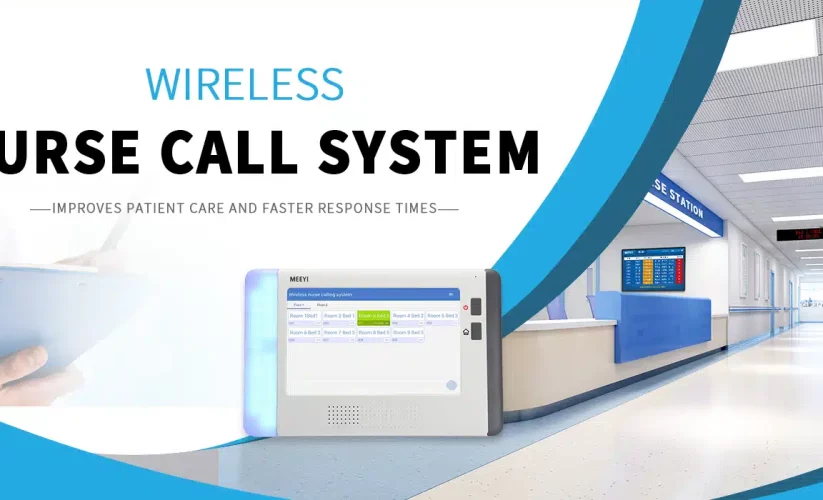
Understanding the Role of Wireless Nurse Call Systems Today
Harris Irfan
- September 4, 2025
In the rapidly evolving landscape of healthcare, technology plays a pivotal role in enhancing patient care and operational efficiency. One of the most critical advancements in this field is the Wireless Nurse Call System for Hospitals. These systems have transformed how patients and healthcare providers communicate, allowing for quicker responses, better patient engagement, and streamlined workflows. In this article, we will explore the significant role of wireless nurse call systems in modern healthcare and how they contribute to improved outcomes for both patients and healthcare providers.
The Evolution of Nurse Call Systems
Nurse call systems have been integral to healthcare facilities for decades. Traditionally, these systems were wired, requiring significant installation and maintenance efforts. Patients would pull a cord or press a button connected to a central system, alerting nurses to their needs. However, these systems had limitations, such as restricted mobility, reliance on physical infrastructure, and the inability to adapt quickly to changing environments.
With the advent of wireless technology, nurse call systems underwent a significant transformation. Wireless Nurse Call Systems eliminate the need for extensive wiring and allow for greater flexibility in installation and operation. Patients can now communicate with staff instantly, regardless of their location within the facility, making healthcare more responsive and patient-centered.
Key Features of Wireless Nurse Call Systems
1. Instant Communication
One of the most significant advantages of a Wireless Nurse Call System for Hospitals is the ability to facilitate instant communication between patients and healthcare providers. Patients can alert nurses with the push of a button, ensuring that their needs are addressed promptly. This immediacy is crucial, particularly in high-stakes environments such as emergency departments and intensive care units, where timely interventions can significantly affect patient outcomes.
2. Mobile Alerts for Staff
In addition to patient call buttons, wireless systems provide mobile communication devices for nursing staff. These devices receive alerts in real-time, allowing nurses to respond quickly to patient needs, regardless of their location within the hospital. This mobility not only enhances response times but also improves workflow efficiency, as nurses are no longer tied to a specific station or area.
3. Integration with Other Technologies
Modern wireless nurse call systems often integrate seamlessly with other hospital technologies, such as electronic health records (EHR), monitoring systems, and patient management software. This integration enables nurses to access critical patient information quickly while responding to calls. For example, when a patient alerts staff, the nurse can view the patient’s medical history and current treatment plan on their device, allowing for informed decision-making.
4. Data Analytics and Reporting
Wireless nurse call systems come equipped with data collection and analytics capabilities. Hospitals can track response times, call volumes, and staff performance metrics, providing valuable insights into operational efficiency. By analyzing this data, healthcare administrators can identify trends, optimize staffing, and improve patient care processes. This data-driven approach is essential for continuous improvement in healthcare delivery.
5. Enhanced Patient Engagement
Engaged patients are more likely to participate actively in their care and adhere to treatment plans. Wireless nurse call systems empower patients by giving them a voice in their care process. When patients can easily communicate their needs, they feel more involved and respected. Additionally, some advanced systems allow for patient feedback, enabling hospitals to gather insights into the patient experience and make necessary improvements.
Benefits of Wireless Nurse Call Systems in Healthcare
1. Improved Patient Safety
The primary goal of any healthcare facility is to ensure patient safety. Wireless nurse call systems contribute significantly to this objective by allowing for rapid communication and timely interventions. When patients can easily alert staff to their needs, the risk of complications or adverse events decreases. For instance, patients experiencing pain or discomfort can signal for help immediately, enabling nurses to assess and address their needs promptly.
2. Increased Staff Efficiency
In a busy hospital environment, staff efficiency is crucial. Wireless nurse call systems streamline workflows by reducing the time nurses spend on administrative tasks and enhancing communication among team members. With mobile alerts and integrated technology, nurses can focus more on patient care rather than running between stations or managing paperwork.
3. Enhanced Workflow Management
Wireless nurse call systems also enhance workflow management within healthcare facilities. With features like real-time monitoring and analytics, hospitals can optimize staff allocation and improve operational efficiency. By identifying trends in patient needs and response times, healthcare administrators can make informed decisions about staffing levels and resource allocation.
4. Greater Flexibility and Scalability
As healthcare facilities grow and adapt to changing patient populations, having a flexible and scalable nurse call system is essential. Wireless systems can be easily modified or expanded to meet the needs of new departments or changing workflows. This adaptability ensures that hospitals can maintain high levels of efficiency and patient care, regardless of changes in their environment.
5. Reduced Administrative Burden
Many nurses spend a significant amount of time on administrative tasks, such as documentation and managing patient requests. Wireless nurse call systems can help alleviate some of this burden by automating certain processes. For example, call logs can be automatically generated, reducing the need for manual data entry. This efficiency allows nurses to devote more time to direct patient care.
Challenges in Implementing Wireless Nurse Call Systems
Despite their numerous benefits, implementing Wireless Nurse Call Systems can present challenges for healthcare facilities. Some of these challenges include:
1. Initial Cost and Budget Constraints
The initial investment in wireless nurse call systems can be significant. Hospitals must consider the costs of equipment, installation, and training. While the long-term benefits often outweigh these costs, budget constraints can pose a challenge, particularly for smaller facilities.
2. Staff Training and Adaptation
Introducing new technology requires effective training and support for staff. Nurses and other healthcare workers must be comfortable using wireless systems to maximize their benefits. Hospitals should invest in comprehensive training programs to ensure a smooth transition and address any resistance to change.
3. Integration with Existing Infrastructure
Integrating wireless nurse call systems with existing hospital infrastructure can be complex. Facilities must ensure that new systems work seamlessly with current technologies, such as EHRs and monitoring devices. Careful planning and collaboration with technology vendors are essential for successful integration.
The Future of Wireless Nurse Call Systems
As technology continues to advance, the future of Wireless Nurse Call Systems looks promising. Several trends are shaping the evolution of these systems:
1. Artificial Intelligence (AI) Integration
The integration of AI into nurse call systems can enhance their capabilities, allowing for predictive analytics and smarter decision-making. AI can analyze patterns in patient requests, helping hospitals anticipate needs and allocate resources more effectively.
2. Mobile Health Applications
The rise of mobile health applications will likely influence the development of nurse call systems. Future systems may incorporate features that allow patients to communicate with healthcare providers through their smartphones, further enhancing accessibility and convenience.
3. Enhanced Patient Monitoring
Future wireless nurse call systems may integrate advanced patient monitoring technologies, enabling real-time tracking of vital signs and health metrics. This integration can trigger alerts for healthcare providers based on specific patient conditions, further improving safety and care quality.
Conclusion
The role of a Wireless Nurse Call System for Hospitals is increasingly vital in today’s healthcare landscape. By facilitating instant communication, enhancing patient engagement, and streamlining workflows, these systems contribute significantly to improved patient care and operational efficiency. As healthcare facilities continue to embrace technological advancements, wireless nurse call systems will play a crucial role in ensuring quality care and patient safety.




